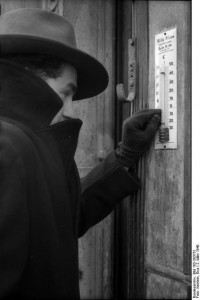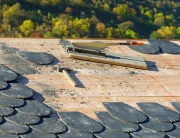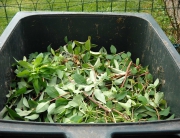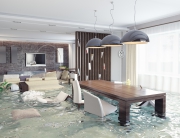 The ice-man cometh. Record-breaking low temperatures are being seen this winter in much of the U.S.,particularly in the Midwest and Northeast, but are now even moving into the South! In many places, you can expect a chilling freeze that hasn’t been this cold in nearly 20 years. In order to avoid serious plumbing problems that can occur when pipes freeze, there are a number of steps you can take, such as making sure that pipes are insulated or wrapped. But these measures would have to be taken ahead of time. Here we offer you some steps you can take right now, so that tonight, when the mercury drops even further, your pipes will be protected. And, we also will give you some solutions to take care of your pipes, should you wake up one morning and discover that they are indeed frozen.
The ice-man cometh. Record-breaking low temperatures are being seen this winter in much of the U.S.,particularly in the Midwest and Northeast, but are now even moving into the South! In many places, you can expect a chilling freeze that hasn’t been this cold in nearly 20 years. In order to avoid serious plumbing problems that can occur when pipes freeze, there are a number of steps you can take, such as making sure that pipes are insulated or wrapped. But these measures would have to be taken ahead of time. Here we offer you some steps you can take right now, so that tonight, when the mercury drops even further, your pipes will be protected. And, we also will give you some solutions to take care of your pipes, should you wake up one morning and discover that they are indeed frozen.
To Prevent Your Pipes from Freezing
Keep a trickle of water running all night. The pipes to be concerned about are those which are located next to exterior walls or in cold areas of the house. Generally speaking, hot water pipes usually don’t freeze, and you will only need to turn on the cold water. If you are experiencing sub-zero temperatures, however, or there is a long run of pipes along an exterior wall, you will want to turn on the hot water just slightly, along with the cold. Just a trickle of warm water will do the trick.
Abrupt drops in temperature can freeze the water in your pipes. When the mercury drops down well below freezing, keep your thermostat in your house always set to the same temperature, day and night. That will help to protect your pipes from further abrupt temperature drops in the middle of the night.
Open cabinet doors in the kitchen and the bathroom, to allow the warmer house air to circulate around the un-insulated pipes near sinks and appliances that are adjacent to exterior walls.
Plug any hole where cold air might be coming in that is close to plumbing pipes.
What to Do If Your Pipes are Already Frozen
Don’t panic! If you have left the water turned on overnight, and it is frozen in the morning, it does not necessarily mean that any pipes have burst, just that they are frozen and need to thaw out. Leave the water turned on, and try applying the heat from a hand-held hair dryer to the pipes underneath the sink. Be sure you are not standing in or near any water on the floor. Another possibility is to follow the affected pipes down to the basement, if you have one, and set up space heaters in the area around the frozen pipes, but far enough away that no water can come into contact with the space heater, if by chance the pipe is cracked and water starts to flow out as it thaws. Remember, you should never leave a space heater unattended.
If indeed your pipes have burst, the very first thing to do is shut off the water to your house at the main. This is often located by the water meter in the front of the house.
The second thing to do is to evaluate the damage, and determine if you can make the repair yourself. Here we offer a selection of possible do-it-yourself fixes, from sweating copper pipe to replacing PVC to using the new, super-simple push-fit technology that you can use to fix the pipe or valve without ever having to turn on a torch. Check out the how-to video above to learn how simple and easy to use these new types of fittings are. At See Jane Drill, we are all about doing things yourself, and you can save a lot of money by making the fix yourself. There are of course some situations where you will need to call a plumber. Hopefully, however, you will have protected your pipes from freezing, and if they do freeze, we have given you some options to solve the problem yourself.
BY SEE JANE DRILL
Where Beginner Home Improvement Enthusiasts Come To Learn
Resources:
How to Sweat (Solder) and Attach Copper Pipe
How to Cut Copper Pipe with a Tubing Cutter
How to Set Up and Operate a MAPP Gas Torch
How to Cut and Assemble PVC Pipe






Leave A Comment